Living in an apartment often means working with limited square footage, but that doesn’t mean your living room can’t be both functional and stunning. Whether you’re dealing with a studio or a more spacious unit, transforming your apartment living room into a place that feels like home requires thoughtful planning and creative solutions.
According to a 2023 survey by Apartment Guide, the average apartment living room in the US is just 210 square feet—meaning every design choice matters. Today’s apartment dwellers are increasingly focused on maximizing both style and function, with 78% of renters citing “multi-purpose furniture” as their top priority when decorating a small space.
In this guide, we’ll explore 22 creative apartment living room ideas that will help you craft a space that’s not only beautiful but perfectly tailored to your lifestyle. From clever furniture arrangements to unexpected personal touches, these strategies will transform even the most challenging apartments into inviting havens you’ll love coming home to.
Part 1: Foundation Elements
1. Smart Color Selection That Transforms Your Space
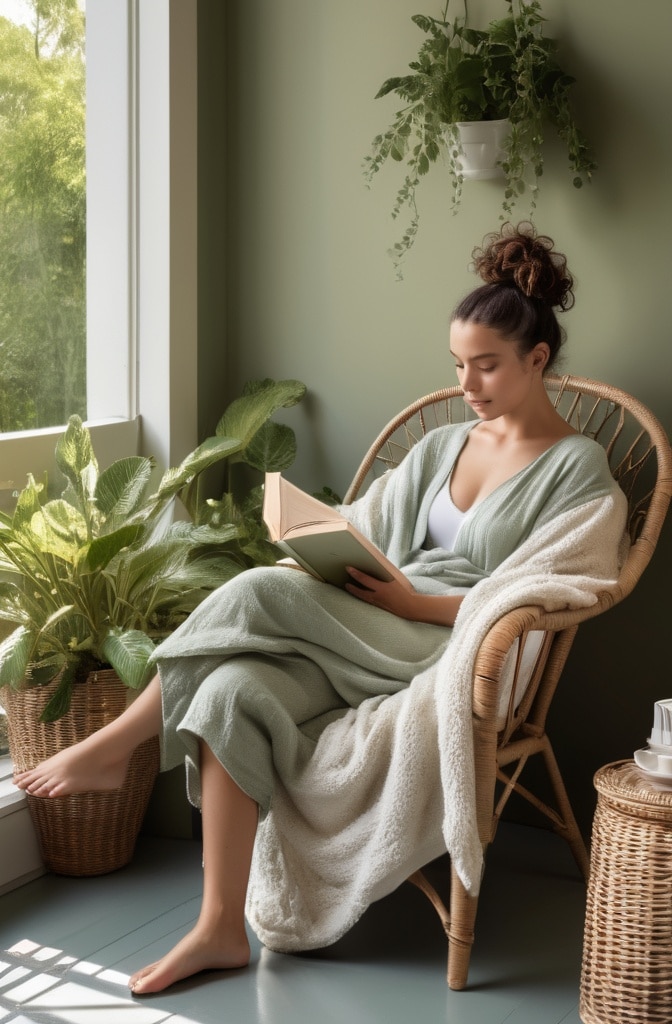
The colors you choose can dramatically alter how spacious your apartment living room feels. While conventional wisdom once dictated that small spaces should stick to white, interior designers now encourage more creative approaches.
“Color is the most powerful design element in small spaces,” says interior designer Rebecca Matthews. “A thoughtful palette can visually expand walls, highlight architectural features, or create coziness where needed.”
For apartments with limited natural light, consider these color strategies:
- Light reflective neutrals: Soft grays, warm beiges, and creamy whites reflect available light while creating a sophisticated backdrop for accessories
- Strategic dark accents: Contrary to popular belief, a dark feature wall can create depth and the illusion of expanded space
- Tonal variations: Using different shades of the same color creates subtle dimension without overwhelming the eye
One often overlooked approach is ceiling color. Painting your ceiling a shade lighter than your walls draws the eye upward, creating a sense of height in apartments with standard 8-foot ceilings.
2. Strategic Furniture Arrangement for Optimal Flow
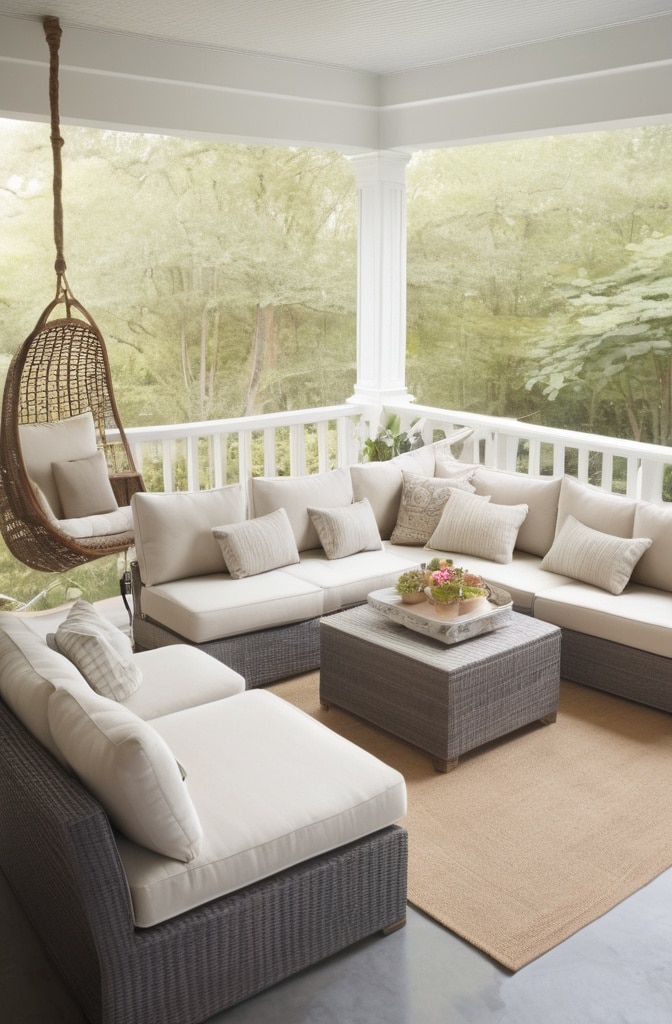
The way furniture is positioned in an apartment living room significantly impacts both functionality and perceived spaciousness. According to space planning experts, most apartment dwellers make the mistake of pushing all furniture against walls, which paradoxically makes rooms feel smaller.
Instead, try these arrangement strategies:
- Float your sofa: Pulling it even 6 inches from the wall creates breathing room
- Create conversation zones: Furniture should be grouped to facilitate interaction, ideally with seating pieces no more than 8 feet apart
- Consider traffic patterns: Leave at least 30 inches of walkin space between major furniture pieces
“In apartments, every inch matters. The goal isn’t to fit as much furniture as possible, but to create negative space that allows the room to breathe,” explains home stager Maria Jacobs.
For open-concept apartments, use furniture placement to define distinct zones without blocking sightlines. A strategically placed bookshelf or console table can separate areas while maintaining visual continuity.
3. Lighting Layers That Create Dimension
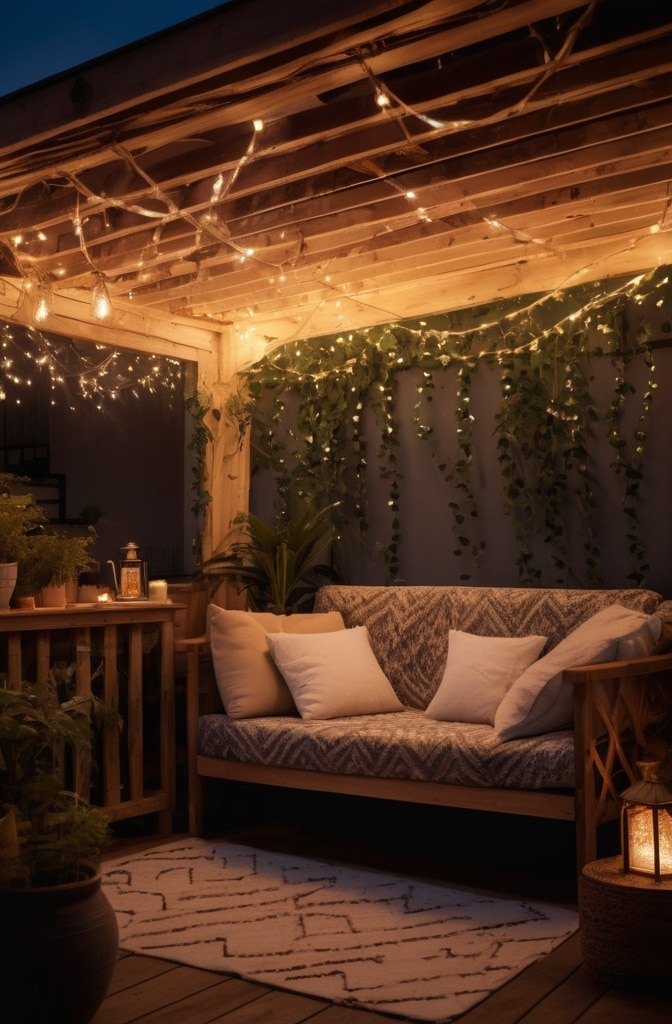
Apartment lighting is notoriously challenging, with many units featuring just one overhead fixture that creates flat, unflattering illumination. Professional designers recommend incorporating at least three light sources in even the smallest living rooms.
The three essential lighting types include:
- Ambient lighting: Overall illumination (ceiling fixtures, recessed lighting)
- Task lighting: Focused light for specific activities (reading lamps, under-cabinet lights)
- Accent lighting: Decorative elements that highlight features (picture lights, table lamps)
For rental apartments where electrical work isn’t an option, wireless puck lights, plugin sconces, and smart bulbs can transform the lighting landscape without renovation. Products like the Philips Hue system allow renters to control brightness and color temperature to suit different moods and times of day.
“The difference between a flat-looking apartment and one with dimension is almost always in the lighting,” notes lighting designer Thomas Chen. “Even adding one floor lamp in a dark corner can completely transform a space.”
4. Multifunctional Furniture: The Apartment Dweller’s Best Friend

When space is limited, every piece of furniture should earn its keep by serving multiple purposes. The marketfor multifunctional furniture has exploded in recent years, with innovative solutions for even the tiniest apartments.
Some particularly clever options include:
- Storage ottomans: Provide seating, footrest capabilities, and hidden storage
- Expandable dining tables: Can accommodate occasional guests without dominating daily living
- Murphy beds with built-in sofas: Transform sleeping areas into living spaces during the day
- Nesting tables: Provide flexible surface area that can be expanded or contracted as needed
A 2024 survey of apartment residents found that 65% consider built-in storage to be the most important feature when purchasing living room furniture—a significant shift from just five years ago when style was the primary consideration.
For those on a budget, existing furniture can be modified for multiple functions. A simple shelf added beneath a coffee table creates magazine storage, while bed risers can create under-bed storage space for seasonal items.
Part 2: Style Enhancement Strategies
5. Area Rugs: Defining Zones in Open Concepts
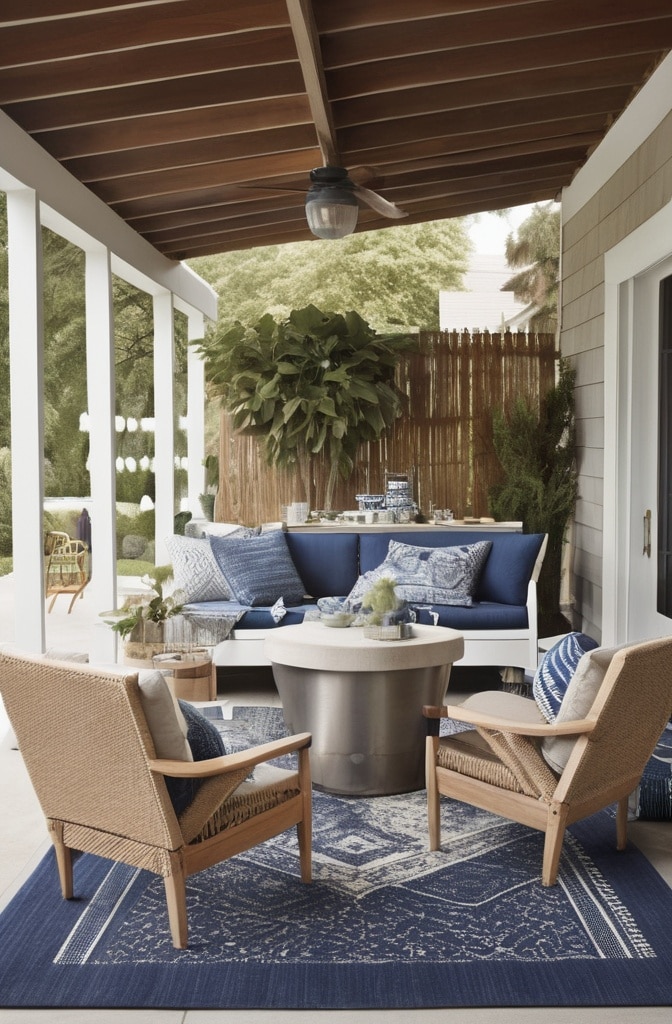
Area rugs do more than add comfort underfoot—they’re essential tools for defining spaces within open-concept apartments. Design experts recommend following specific sizing guidelines based on your room configuration:
- Living areas: The rug should be large enough that at least the front legs of all seating pieces rest on it
- Dining areas: Extend the rug at least 24 inches beyond the table edge on all sides
- Studios: Use different rugs to visually separate sleeping, dining and living zones
“The most common mistake I see in apartments is rugs that are too small,” says interior stylist James Wong. “An undersized rug makes the entire room feel cramped and disconnected.”
Material selection is equally important in apartment settings. Flatweave wool rugs offer durability with minimal shedding, while indoor/outdoor polypropylene rugs provide impressive stain resistance for high-traffic areas or homes with pets.
For ultimate flexibility, consider layering rugs—a larger, neutral base rug topped with a smaller statement piece allows for easy updates as your style evolves.
6. Mirror Placement Tricks to Double Visual Space
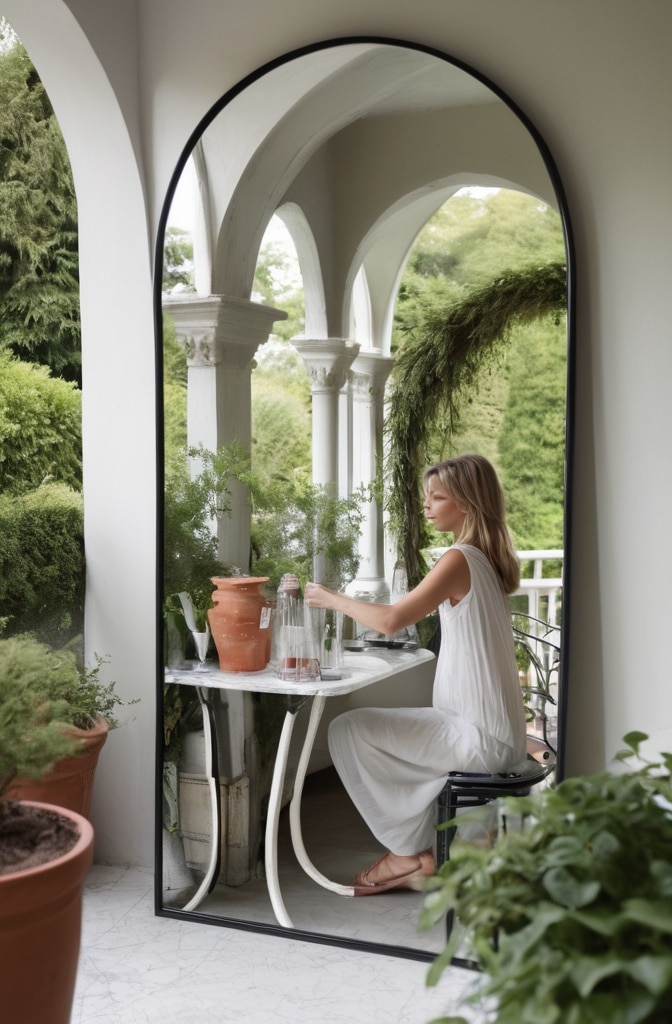
Strategic mirror placement can dramatically enhance the perception of space in apartment living rooms. Beyond the obvious benefit of reflection, mirrors can redirect natural light, highlight architectural features, and create focal points.
Optimal mirror placements include:
- Opposite windows: Reflects natural light deeper into the room
- Behind light sources: Amplifies both natural and artificial light
- At the end of hallways: Creates the illusion of extended space
- Above console tables: Creates a balanced vignette while expanding visual space
According to design psychologists, mirrors placed to reflect attractive views rather than blank walls create the greatest sense of expanded space. For maximum impact in smaller apartments, consider oversized mirrors that stretch nearly from floor to ceiling.
Renters concerned about wall damage can explore leaning floor mirrors, mirrored furniture, or decorative mirror groupings that distribute weight across multiple hanging points.
7. Statement Wall Art That Doesn’t Overwhelm
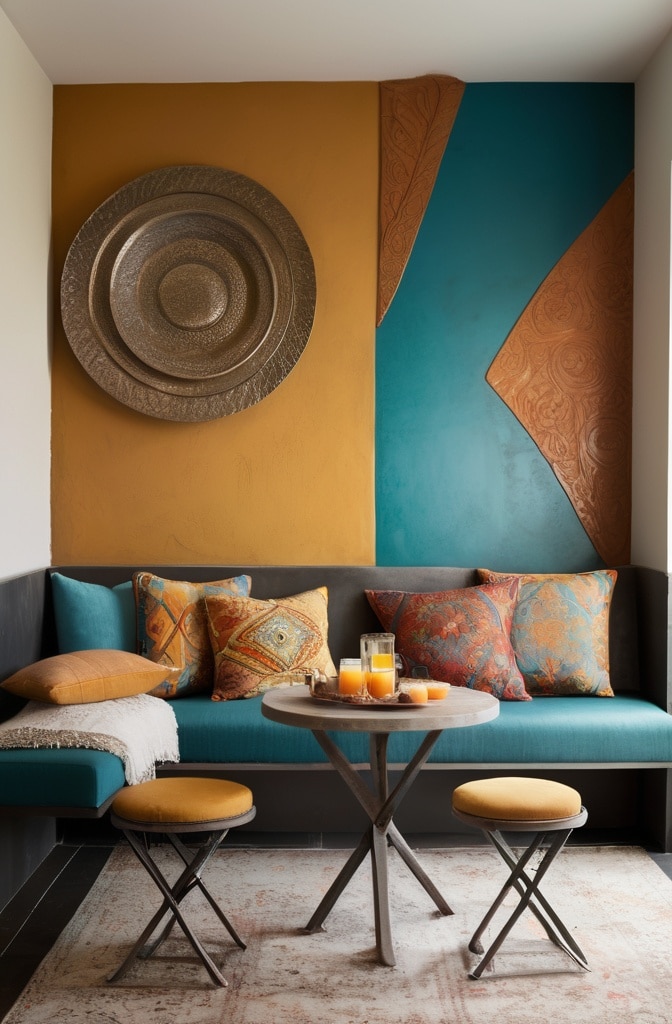
Art selection for apartment living rooms requires thoughtful consideration of scale. While large statement pieces can actually make small spaces feel more expansive, proper proportion is key.
Interior designer Ana Martinez suggests: “The ideal size for main wall art is approximately two-thirds the width of the furniture it hangs above. This creates balance without overwhelming the space.”
For apartment dwellers dealing with rental restrictions, these art solutions offer impact without damage:
- Command picture hanging strips: Hold up to 16 pounds with no wall damage
- Picture rails: Allow for flexible art arrangement without multiple nail holes
- Washi tape frames: Create the illusion of framed art with colorful, removable tape
- Easels: Display art without hanging at all
Gallery walls remain popular in apartments because they allow for personal expression without requiring one expensive large piece. The key to a cohesive gallery arrangement is maintaining consistent spacing (ideally 2-3 inches between frames) and unified framing or color themes.
8. Window Treatments That Balance Privacy and Light
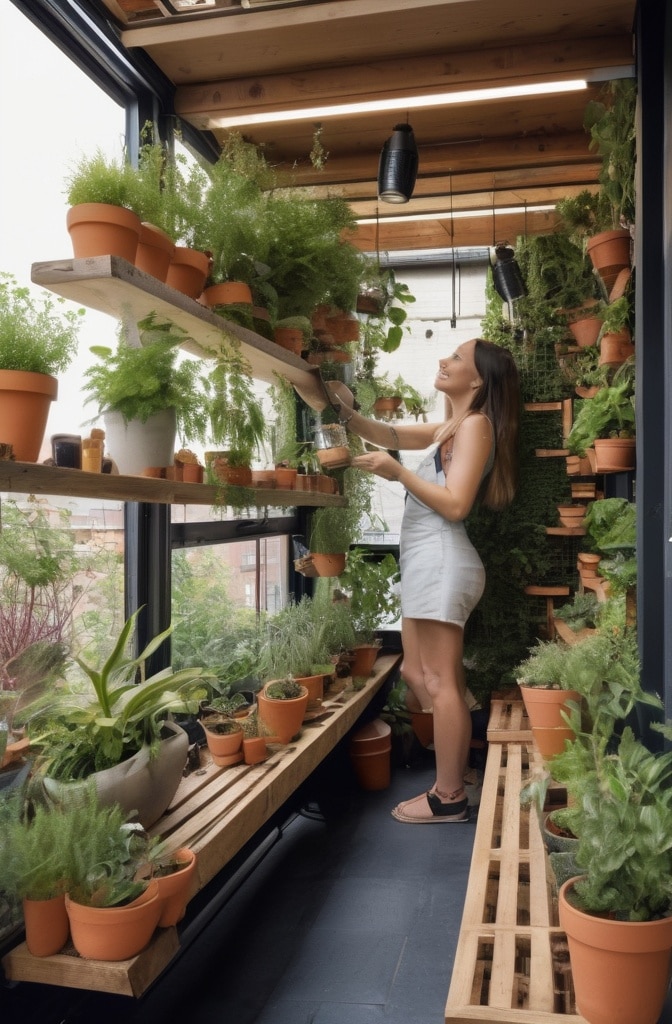
Window treatments in apartments must balance multiple functions: privacy, light control, insulation, and style. The challenge is particularly acute in urban apartments where windows may face neighboring buildings or busy streets.
Modern solutions for apartment windows include:
- Top-down/bottom-up shades: Allow light through the top while maintaining privacy below
- Sheer curtains layered with blackout panels: Provide flexibility for different times of day
- Smart film: Adhesive window film that becomes opaque with the touch of a button
- Tension rod solutions: No-drill options for renters
“Window treatments should frame views when you have them and create a view when you don’t,” explains window treatment specialist Elena Rodriguez. “In apartments with less-than-ideal outlooks, the window covering itself becomes the view.”
For oddly-sized apartment windows, custom-cut roller shades offer clean lines without the premium price of fully custom drapery. Many online retailers now offer made-to-measure options at reasonable price points.
Part 3: Clever Space Maximizers
9. Vertical Storage Solutions That Draw the Eye Up
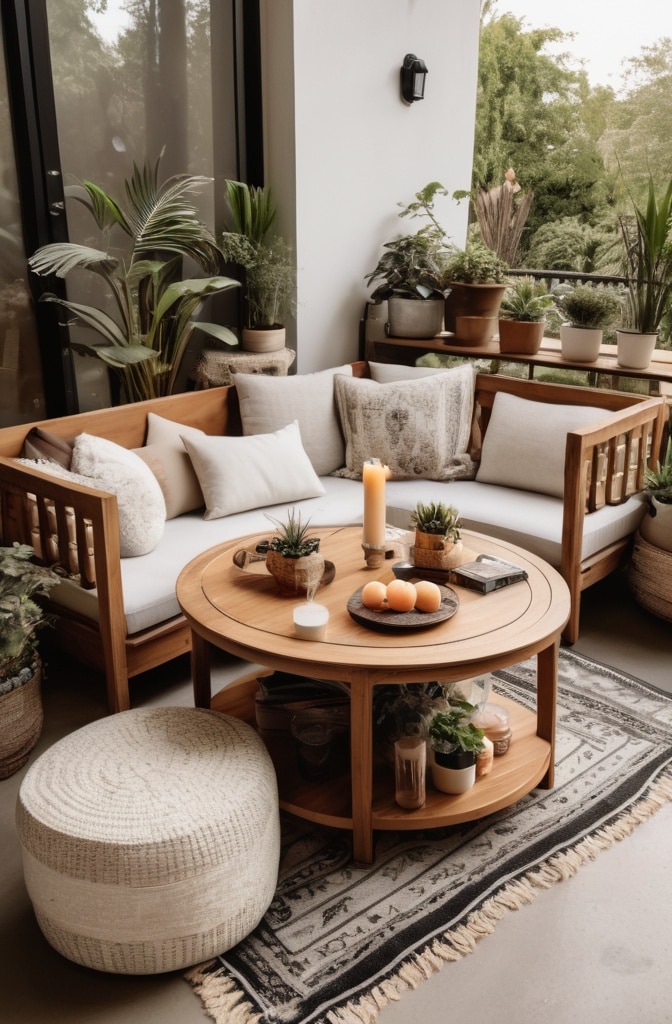
When floor space is limited, the walls become valuable real estate for both storage and visual interest. Vertical storage strategies can dramatically increase functional space while creating architectural interest in otherwise plain apartment walls.
Effective vertical storage options include:
- Floor-to-ceiling bookcases: Create a library effect while maximizing storage
- Floating shelves in unexpected configurations: Zig-zag patterns or asymmetrical arrangements add visual interest
- Wall-mounted cabinets: Provide closed storage without footprint
- Pegboard systems: Offer flexible organization that can evolve with needs
“In small spaces, the walls are your best friends,” says organization expert David Kim. “Most apartments utilize only about 30% of available wall space for storage—that’s a huge missed opportunity.”
For maximum impact, extend storage all the way to the ceiling. The highest shelves can house seasonal or rarely-used items, while keeping everyday necessities within easy reach at lower levels.
10. Coffee Tables That Work Overtime
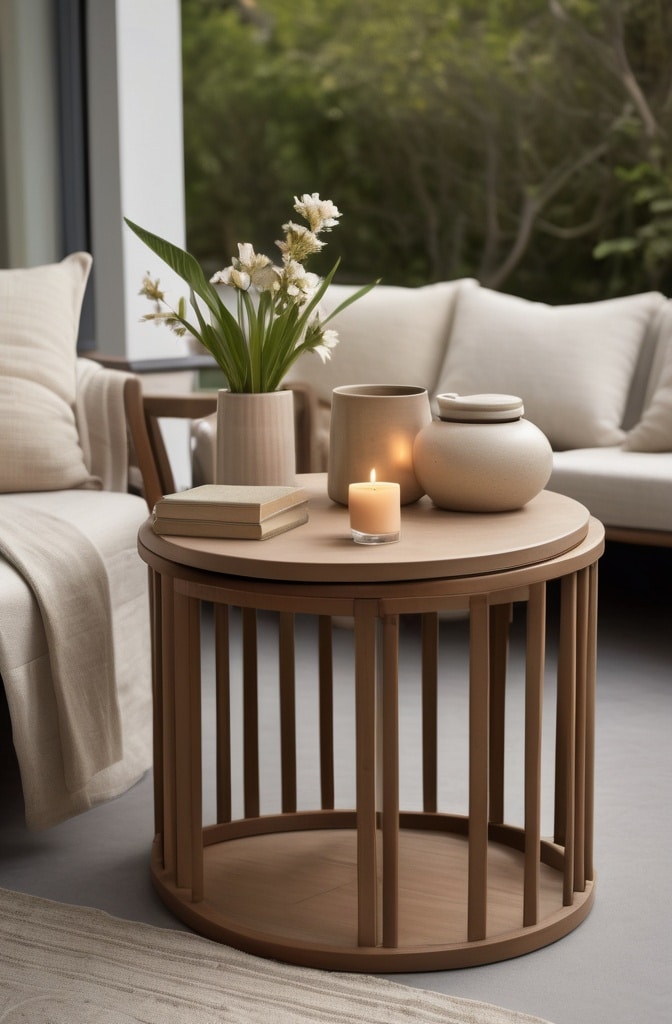
The coffee table in an apartment living room should never be merely decorative. Today’s smartest designs incorporate storage, adjustability, and sometimes even additional seating or dining capabilities.
Innovative coffee table options for apartments include:
- Lift-top tables: Surface raises to comfortable work or dining height
- Storage tables with compartments: Hide remotes, gaming controllers, and other small items
- Nesting table sets: Can be expanded for entertaining or compacted for daily use
- Ottoman/table hybrids: Provide soft seating that transforms to hard surface as needed
“I recommend coffee tables with at least 50% of their volume dedicated to storage,” notes small-space designer Rebecca Chen. “In apartments, decorative-only furniture is a luxury few can afford.”
For the ultimate in flexibility, consider modular cube ottomans that can function as coffee tables when topped with trays, additional seating when guests arrive, or can be separated to serve as individual side tables.
11. Side Tables and Their Secret Functions

Side tables offer prime opportunities for multifunctionality in apartment living rooms. Beyond providing a spot for drinks or reading materials, today’s innovative designs incorporate charging stations, additional storage, and even convertible features.
Some particularly clever options include:
- C-tables: Slide under sofas to hold laptops, meals, or drinks without a traditional footprint
- Drum tables: Hollow centers provide hidden storage for blankets or games
- Convertible side tables: Transform into extra seating, step stools, or larger surfaces
- Charging tables: Built-in USB ports and wireless charging pads eliminate cord clutter
According to furniture industry data, sales of multifunctional side tables have increased by 43% since 2020, with apartment dwellers driving much of that growth.
For DIY-inclined renters, vintage suitcases stacked on hairpin legs create unique side tables with built-in storage, while salvaged architectural elements like columns or balustrades can be repurposed as distinctive table bases.
12. Entertainment Centers That Don’t Dominate
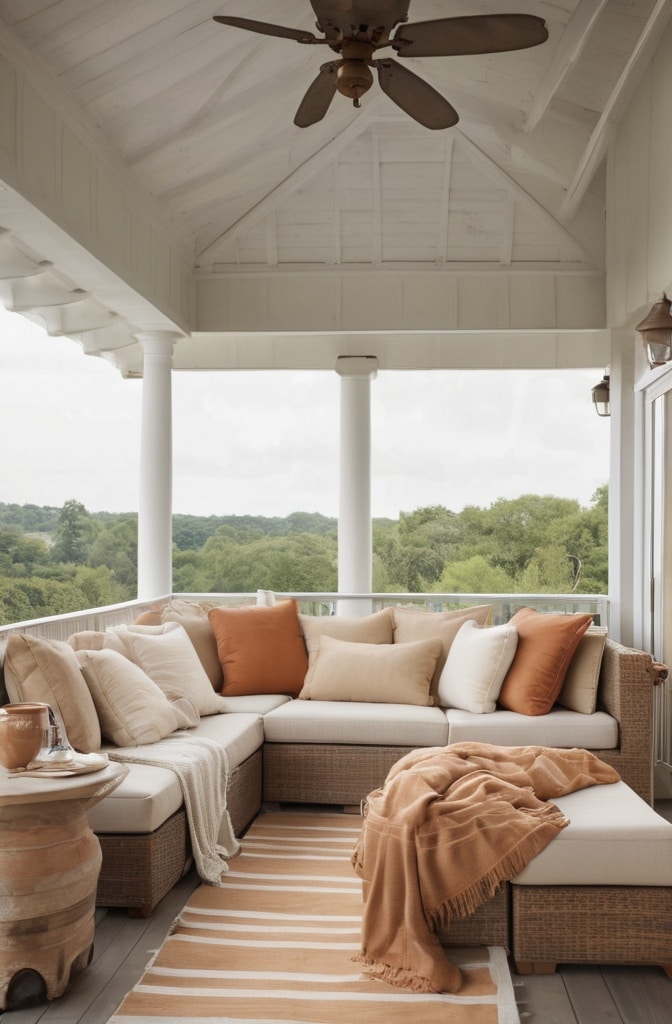
Television and media storage presents unique challenges in apartment living rooms, where bulky entertainment centers can quickly overwhelm available space. Modern solutions focus on minimizing visual impact while maximizing functionality.
Space-efficient media solutions include:
- Floating media consoles: Create the illusion of more floor space
- TV wall mounts with integrated cable management: Eliminate the need for furniture entirely
- Projector setups: Allow for large viewing experiences without permanent screen presence
- Hidden TV solutions: Artwork that rolls up or slides aside to reveal screens
“The goal with apartment entertainment centers is for the TV to disappear when not in use,” explains interior technologist Marcus Winters. “Either through actual concealment or through thoughtful integration with wall decor.”
For renters unable to mount televisions, slimline media consoles with heights carefully calculated to maintain proper viewing angles offer the best compromise between function and form.
Part 4: Comfort and Personality Elements
13. Sofa Selection: The Heart of Your Living Room
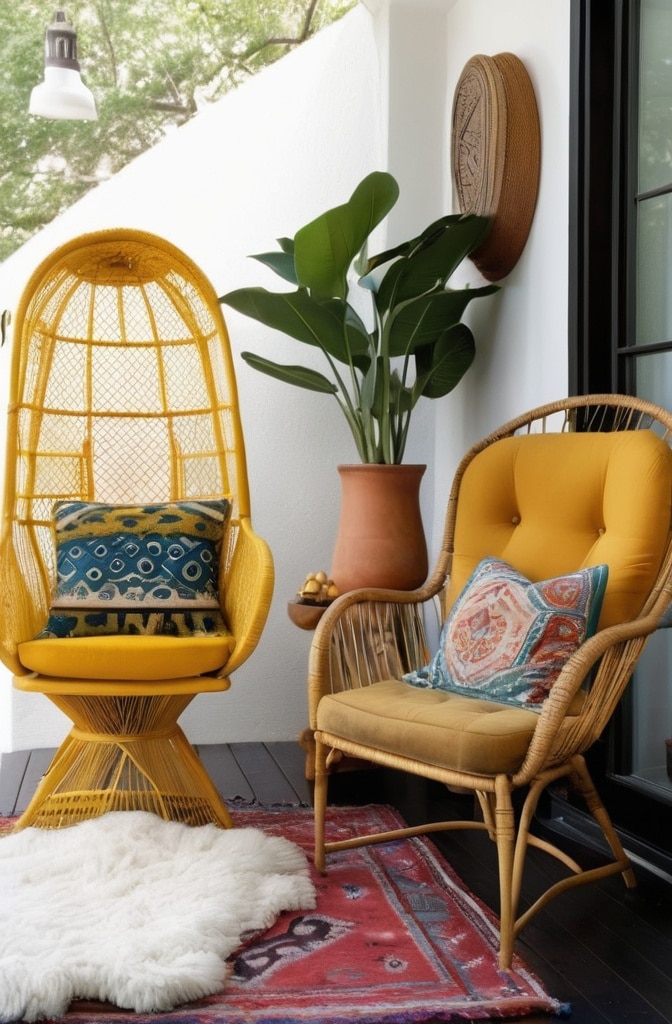
Sofa choice can make or break an apartment living room, with scale being the most critical consideration. While oversized sectionals dominate design magazines, they’re rarely practical for typical apartment dimensions.
When selecting an apartment-appropriate sofa:
- Measure doorways and hallways: Ensure the piece can actually enter your space
- Consider seat depth: Shallower seats (around 21-22 inches) save space while maintaining comfort
- Look for raised legs: Creating visible floor beneath furniture reduces visual heaviness
- Prioritize back height: Lower backs make rooms feel more open
According to furniture retailer data, apartment-dwellers increasingly favor modular designs that can be reconfigured as needs or spaces change. Brands like Burrow and Lovesac have built entire business models around furniture that can adapt to different apartment layouts.
For maximum flexibility, some designers recommend forgoing traditional sofas entirely in favor of multiple armchairs that can be easily rearranged for different social situations or moved to future homes without concern for fitting through doorways.
14. Accent Chairs That Add Character
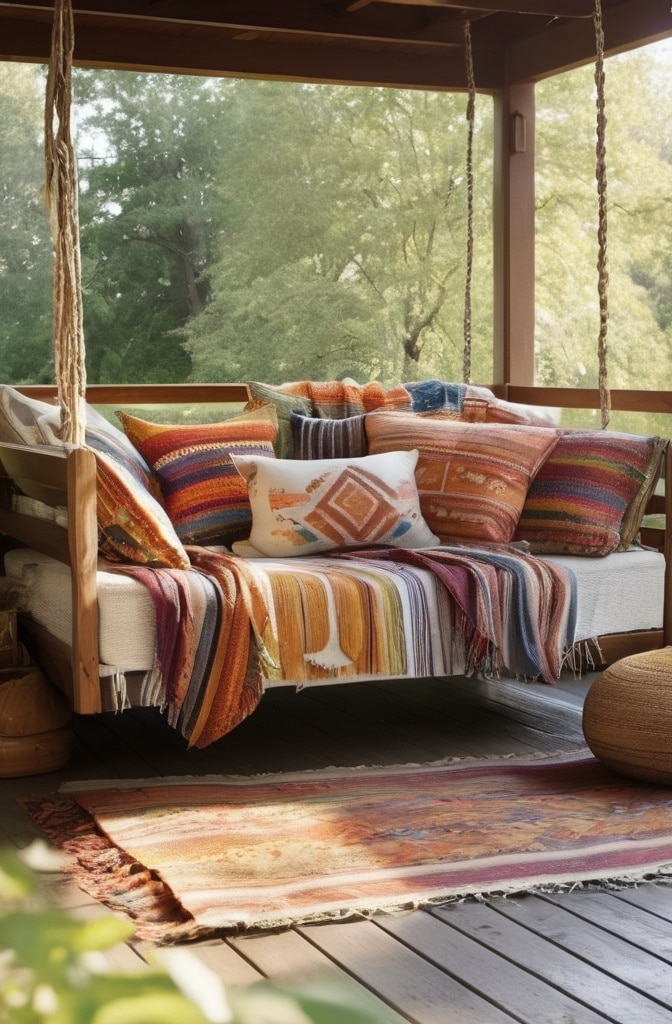
Accent chairs provide opportunities to introduce personality, color, and additional seating without the commitment of a larger sofa. In apartment living rooms, these pieces often serve multiple functions in different areas as needs change.
Effective accent chair strategies include:
- Nesting pairs: Two identical smaller chairs often work better than one large chair
- Swivel functionality: Allows chairs to face conversation areas or be turned toward views/TV
- Slipper chairs: Armless designs save space while providing comfortable seating
- Folding or stacking options: Can be stored when not needed
“An accent chair is often the most personal piece in a living room,” says furniture designer Elena Smith. “It’s where you can take risks with color or pattern without overwhelming the space.”
For apartments that occasionally host overnight guests, sleeper chairs or convertible chair beds provide additional sleeping space with a much smaller footprint than traditional sleeper sofas.
15. Textiles That Transform: Pillows, Throws and More
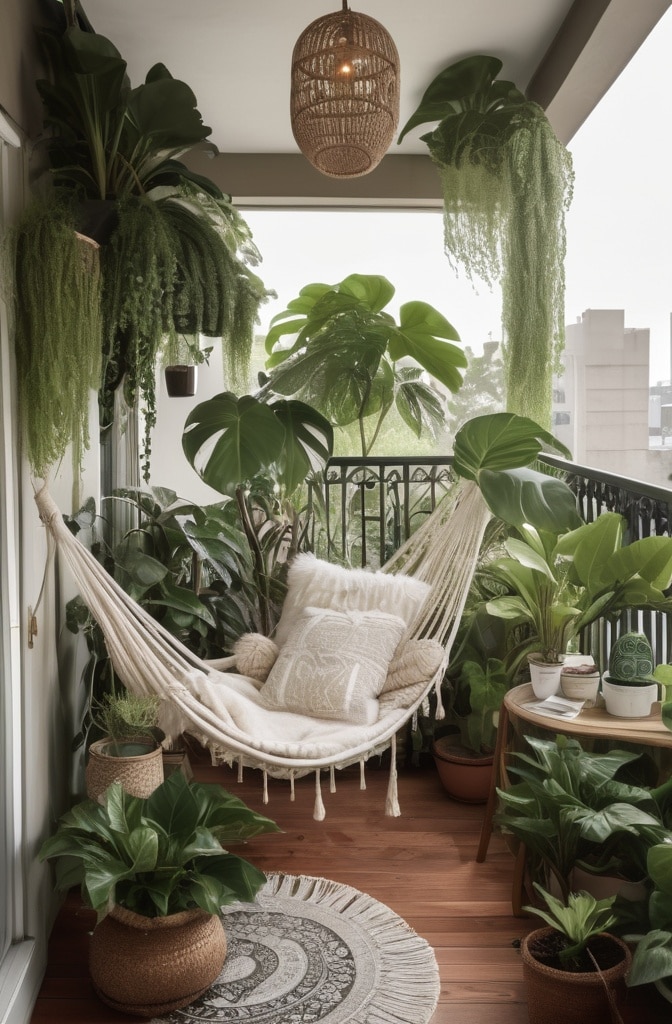
Soft furnishings offer the highest impact-to-cost ratio in apartment decorating. These elements introduce color, texture, and personality while being easy to change as tastes evolve or seasons change.
A well-curated textile collection might include:
- 2-3 sets of pillow covers: Allow for seasonal rotation without storage concerns
- Varied textures: Mix smooth, nubby, and plush materials for visual and tactile interest
- Multipurpose throws: Select options that are attractive displayed but functional when needed
- Slipcovers: Transform inherited or budget furniture without replacement
Interior stylists recommend limiting accent colors to 2-3 per room in apartments to prevent visual chaos in limited space. Within that palette, textiles can vary in pattern and texture while maintaining color cohesion.
For renters dealing with unsightly but immovable furniture, strategic use of throws and custom-fit slipcovers can disguise dated pieces without the expense of replacement. Online tutorials for no-sew slipcover options make this accessible even for those without crafting skills.
16. Indoor Plants: Size-Appropriate Greenery
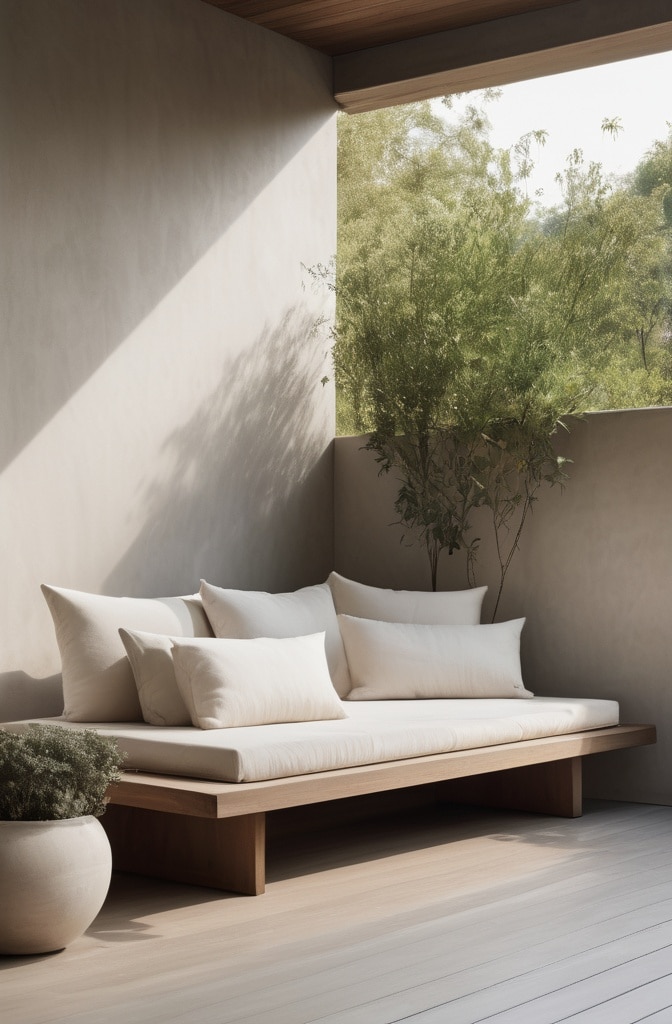
Plants bring life, improved air quality, and natural elements to apartment living rooms, but species selection must consider space constraints and typical apartment light conditions.
Apartment-friendly plant options include:
- Hanging varieties: Pothos, spider plants, and string of pearls utilize vertical space
- Structural specimens: Snake plants and ZZ plants provide architectural interest with minimal care
- Pet-safe options: Boston ferns and prayer plants for homes with animals
- Air-purifying specialists: Peace lilies and rubber plants improve indoor air quality
Research from NASA’s Clean Air Study found that just 3-5 strategically placed houseplants can significantly improve air quality in spaces under 800 square feet—making them functional as well as decorative in apartment settings.
For those with limited natural light, new grow light technologies disguised as attractive fixtures or bulbs that fit standard lamps allow for healthy plants even in challenging conditions. Self-watering systems address care concerns for busy apartment dwellers or frequent travelers.
Part 5: Personal Touches That Complete the Space
17. Minimalist Styling Approach for Visual Calm
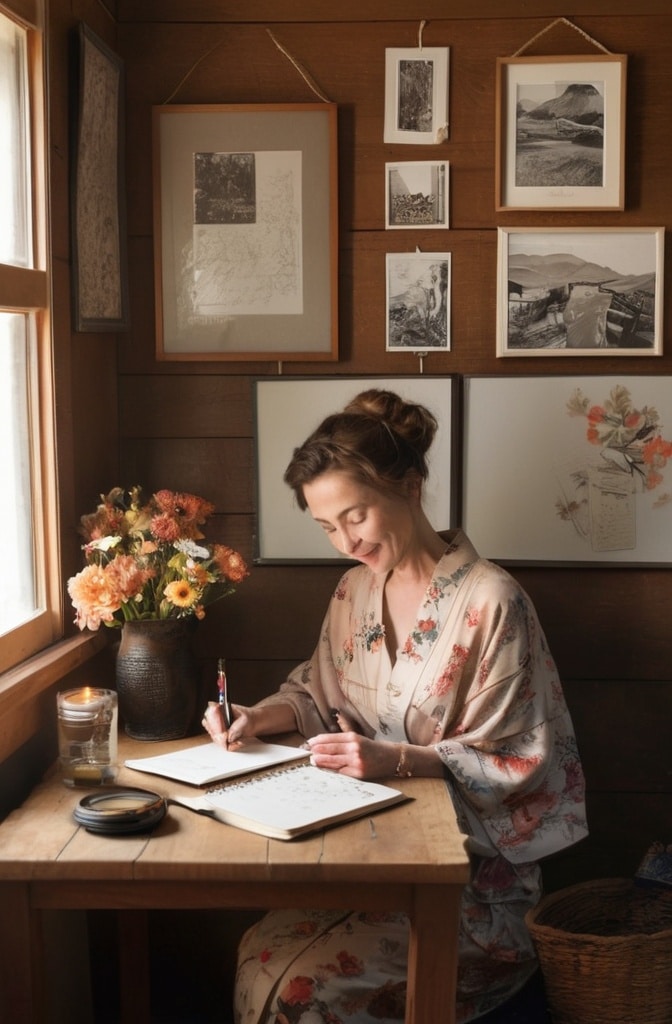
In apartments where visual clutter can quickly make spaces feel cramped, a minimalist approach to accessories creates breathing room without sacrificing personality. The key is curatinr fewer, more meaningful items rather than displaying everything at once.
Effective minimalist strategies include:
- The 60-30-10 rule: 60% of visible items in neutral tones, 30% in secondary colors, 10% in accent colors
- Negative space: Deliberately leaving some surfaces empty
- Collection rotation: Displaying only a portion of collections at any given time
- Hidden storage: Keeping necessary but utilitarian items out of sight
“Minimalism in small spaces isn’t about owning less—though that helps—it’s about displaying less,” explains organization consultant Maya Williams. “The eye needs rest spots in order to appreciate what is displayed.”
For skeptics who find minimalism too stark, “warm minimalism” incorporates natural materials, soft textures, and careful color selection to create spaces that feel both uncluttered and inviting.
18. Personal Galleries That Tell Your Story
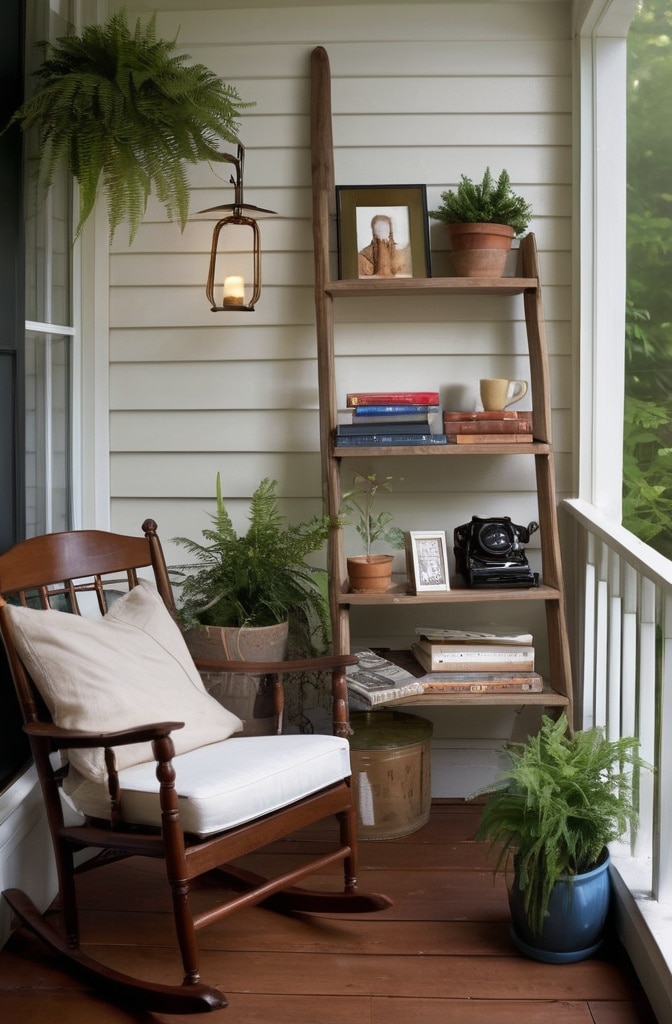
Personal photos and mementos transform generic apartments into homes that reflect their inhabitants. The challenge lies in displaying these elements in cohesive ways that enhance rather than overwhelm the space.
Creative display solutions include:
- Digital display frames: Rotate hundreds of images without wall space
- Themed gallery groupings: Collections unified by subject, color treatment, or frame style
- Memory shadow boxes: Contain three-dimensional mementos in wall-mounted displays
- Photo ledges: Allow for easy rearrangement without multiple nail holes
“Personal items should be treated as art,” advises home stylist Janelle Peters. “That means being selective, considering composition, and creating intentional arrangements rather than scattered displays.”
For renters concerned about wall damage, adhesive hanging solutions, tension wires, or freestanding photo displays offer alternatives to traditional hanging methods. Some newer apartment buildings even feature picture rail molding specifically for damage-free art hanging.
19. Creating a Functional Reading Nook in Limited Space
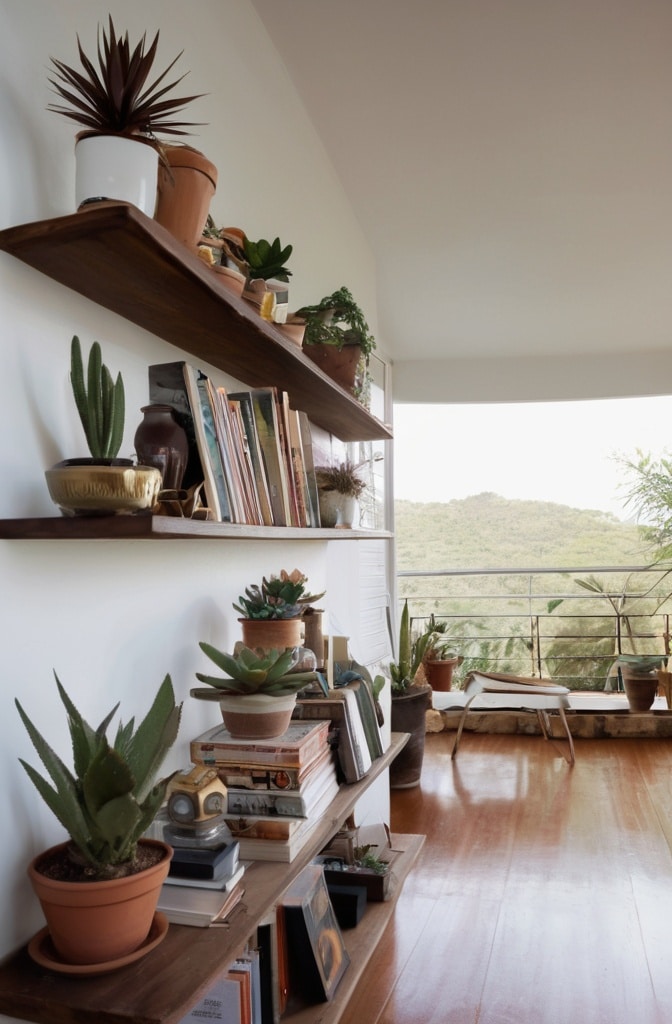
Dedicated reading spaces create purposeful retreats within apartment living rooms, often utilizing otherwise awkward corners or underutilized window areas. Even the smallest apartments can incorporate these havens with thoughtful planning.
Essential elements for apartment reading nooks include:
- Comfortable, space-efficient seating: Armchairs, floor cushions, or window seats
- Task lighting: Directed illumination for reading without eyestrain
- Surface for beverages: Small side table or wall-mounted shelf
- Book storage: Wall shelves, baskets, or digital reader storage
According to interior designers, positioning reading nooks near natural light not only saves on energy costs but also positively impacts mood and reading comprehension. For apartments with limited windows, full-spectrum lighting provides similar benefits.
For ultimate space efficiency, some apartment dwellers repurpose closets as reading nooks by removing doors, adding cushioned seating, and installing battery-operated lighting—creating cozy retreats with zero footprint in the main living area.
20. Bookshelf Styling Beyond Basic Storage
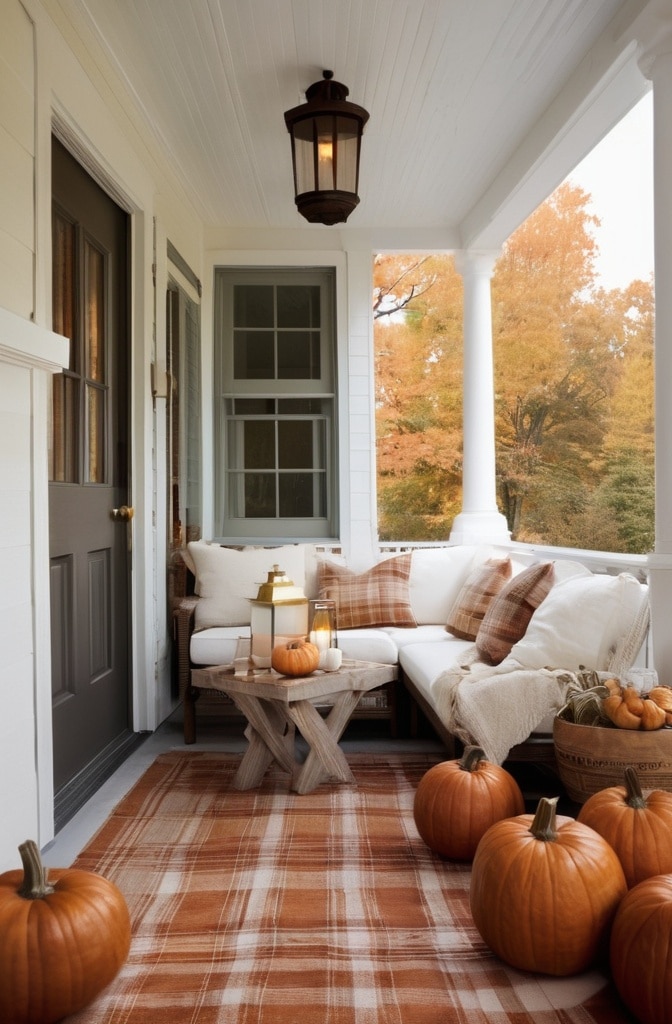
Bookshelves in apartments serve dual purposes: practical storage and prime decorative real estate. Thoughtful styling transforms utilitarian shelves into gallery-like displays that showcase personality while maintaining function.
Professional stylists recommend these bookshelf strategies:
- The 70/30 rule: 70% books, 30% decorative objects for visual relief
- Color coordination: Either spine colors or covered books in unified palette
- Varied orientations: Mix vertical and horizontal stacking for visual interest
- Negative space: Leaving some shelves partially empty to prevent visual overwhelm
“Books themselves are decorative elements,” notes library designer Sarah Thompson. “Vintage hardcovers, colorful series, or meaningful titles contribute to the aesthetic beyond mere storage.”
For renters with limited built-ins, freestanding bookshelf options have evolved beyond basic units. Room divider bookcases, ladder styles, and modular systems offer storage without permanently altering apartments.
21. Seasonal Refreshes Without Major Changes
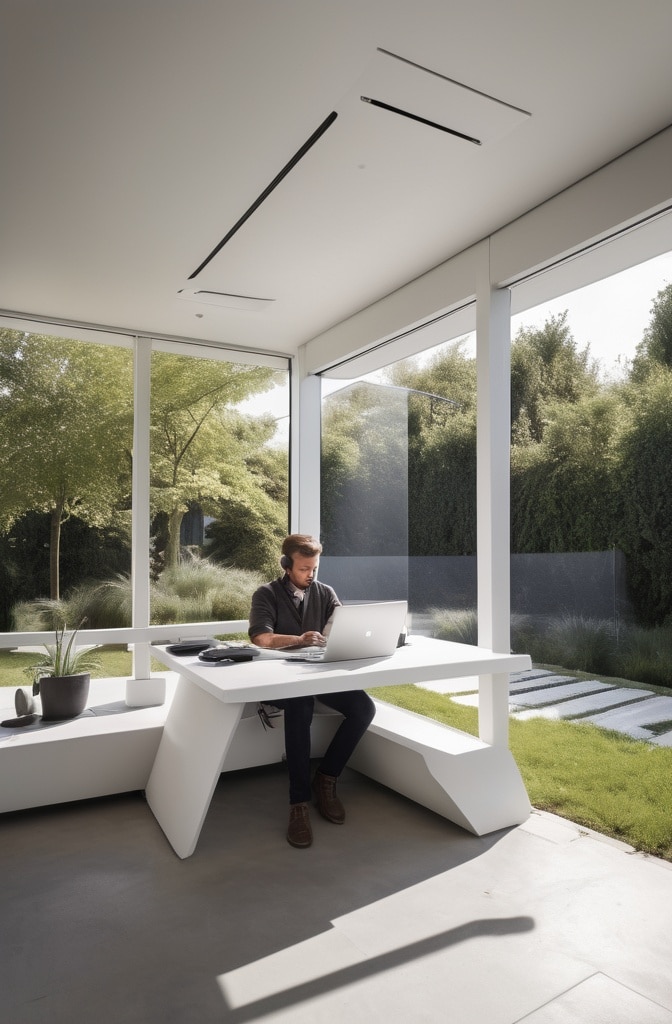
Seasonal updates prevent apartment decor from feeling stagnant without requiring significant investment or storage space. Strategic swaps of just a few elements can completely transform the feeling of a space.
Low-commitment seasonal changes might include:
- Pillow covers: Store flat when not in use
- Botanical elements: Fresh or dried arrangements appropriate to the season
- Scent landscapes: Candles, diffusers, or simmer pots that evoke seasonal atmospheres
- Throw blankets: Lightweight cotton for summer, chunky knits for winter
“The goal of seasonal decorating in apartments is maximum impact with minimum storage requirements,” explains home stylist Jordan Lee. “Focus on items that can be consumed, repurposed, or stored flat.”
For holiday decorations in small spaces, consider alternatives to traditional bulky items. Tabletop versions of seasonal symbols, wall hangings instead of freestanding decorations, and multipurpose items that transition between seasons maximize impact while minimizing storage needs.
22. Tech Integration Without Eyesores
Technology is essential in modern living rooms but often creates visual clutter and cord chaos in apartment settings. Thoughtful integration maintains functionality while preserving aesthetics.
Solutions for technology management include:
- Cord covers paintable to match walls: Disguise necessary wiring
- Furniture with built-in charging: End tables with wireless charging pads or USB ports
- Cable management boxes: Contain power strips and excess cord length
- Smart home hubs disguised as decor: Speakers and controls that blend with interiors
According to home technology experts, the average living room contains 5-7 devices requiring power—making cord management one of the most impactful improvements in apartment aesthetics.
For comprehensive solutions, some apartment dwellers create dedicated charging stations in drawers or cabinets, with small holes drilled for cable passage. This keeps devices and their associated clutter completely out of sight while maintaining functionality.
Conclusion: Your Apartment Living Room Transformation
Transforming an apartment living room doesn’t require massive space or budget—just thoughtful planning and creative problem-solving. By implementing even a handful of the ideas we’ve explored, you can create a space that feels both larger and more personal.
Remember that successful apartment living rooms:
- Prioritize function first, then layer in style
- Make every piece of furniture work harder through multifunctionality
- Use vertical space as effectively as horizontal
- Incorporate personality through carefully curated displays
Most importantly, your apartment should reflect your unique needs and preferences. Mix and match these ideas based on your specific challenges, whether that’s limited square footage, awkward layouts, or rental restrictions.
We’d love to see how you’ve transformed your apartment living room! Share your before-and-after photos in the comments below, or tag us on social media with #ApartmentTransformation.
Bonus: Which Apartment Living Room Ideas Are Right For You?
Take this quick assessment to identify which strategies would most benefit your specific space:
- What’s your biggest apartment challenge?
- Limited square footage
- Awkward layout
- Rental restrictions
- Lack of architectural interest
- Which function is most important in your living room?
- Entertainment/TV watching
- Conversation/socializing
- Working/studying
- Reading/relaxing
- What’s your decor personality?
- Minimalist
- Eclectic collector
- Color enthusiast
- Texture lover
Based on your answers, you’ll find your most impactful strategies in sections 1-4 (space challenges), 5-8 (functional priorities), or 9-12 (style preferences). Start with those recommendations for the biggest transformation impact!
